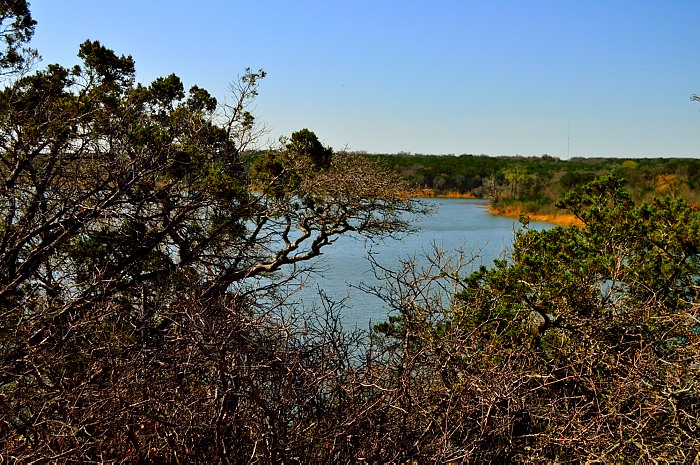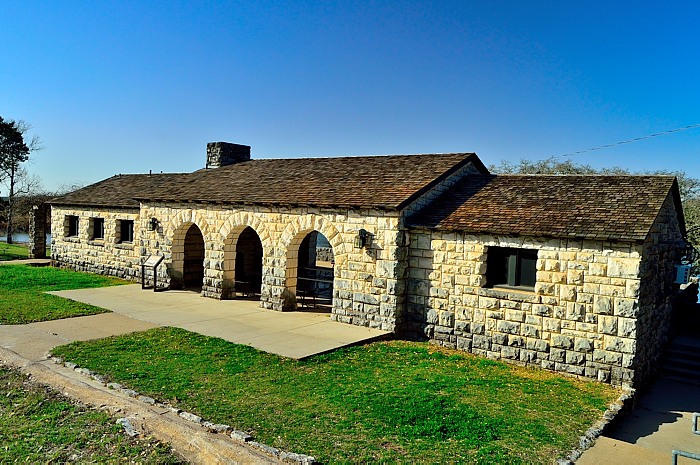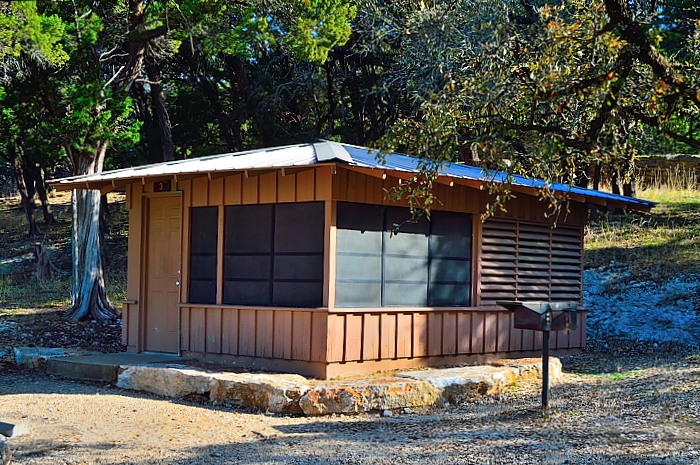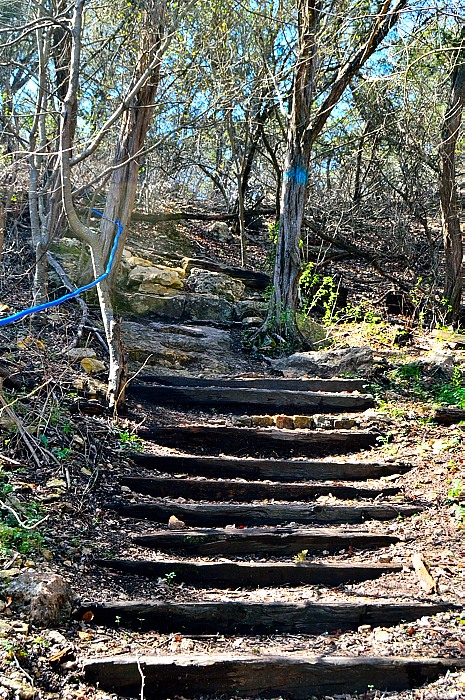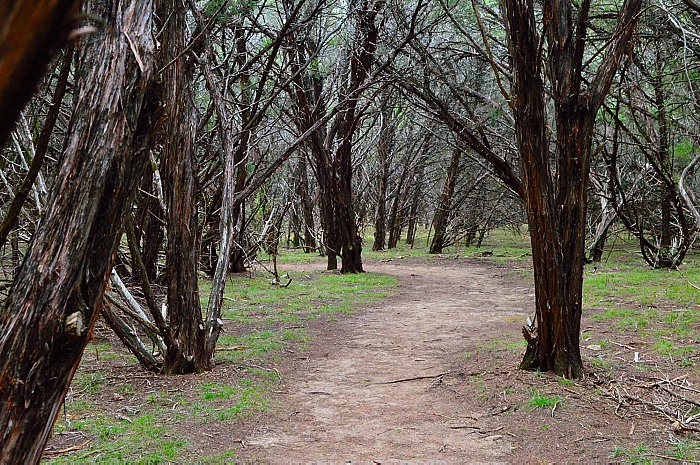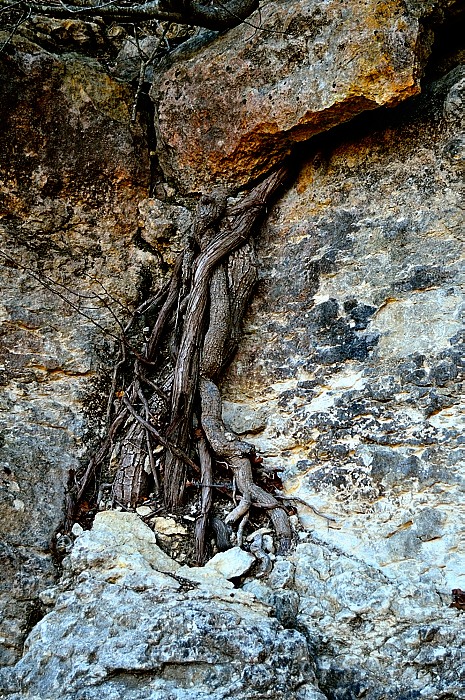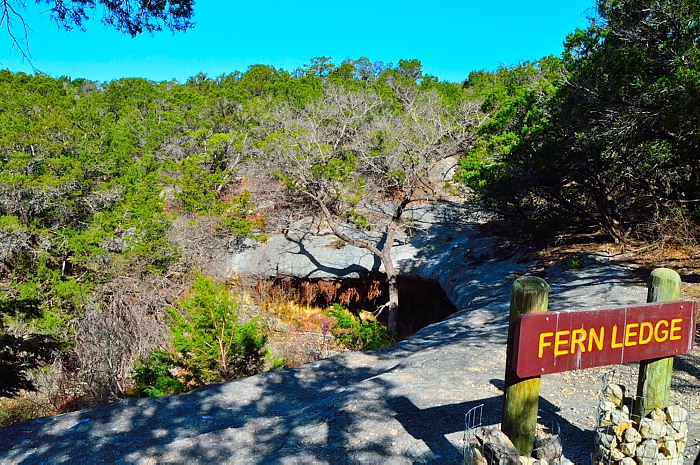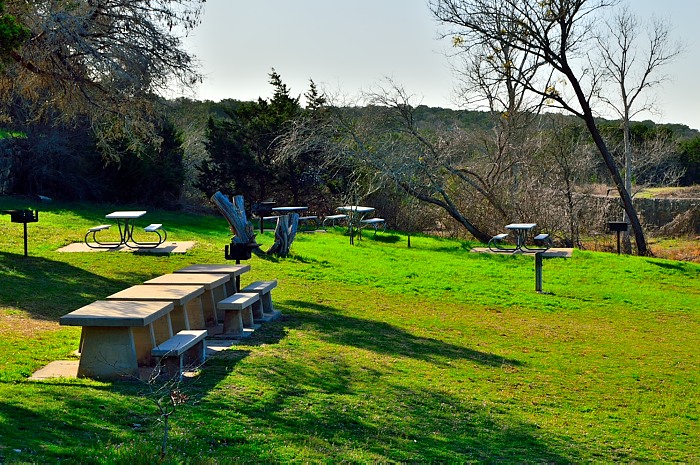Situated along the 98th meridian on the transition between sweeping prairieland and the top edge of the Texas Hill Country is the embodiment of a legend. In the 1933 novel Lost Horizon by James Hilton, the author describes a mythical land of Shangri-La. It was a fictional account of a lost Tibetan paradise, a valley cut off from the world. Meridian State Park is not fictional but it also seems a paradise cut off from the world. Held within weathered limestone bluffs 50 miles northwest of Waco, it swallows you up in endless mixed woodlands, offering protection, solitude, and a tranquil place to unwind with your family. This 505-acre park seems larger than it is, suggested by one lonely road that rambles throughout the timbered refuge.
The area which now comprises the park was cut off from white settlers prior to 1841because of the presence of Indians and natural geographic barriers. European settlers did not push their way in until the mid-nineteenth century. In the early days fire and water shaped the terrestrial surroundings of this region. Grassland fires kept the prairie landscape open and erosion cut deep fissures in the Edwards limestone. As the cliffs grew steeper, they quickly filled with oaks and cedars protected from the mainland fires above. The Texas-Santa Fe expedition of 1841 passed near what is the present-day location of the park as it moved through the Bosque Valley. When European settlers displaced the Indians, fires were avoided to protect livestock and crops. Today, Ashe juniper and other trees have spread across the upland, gobbling up once vast prairieland.
Texas bought the land from private owners in Bosque County from 1933 through 1935. During this time, CCC Company 1827 (made up of World War I veterans) worked to develop the park. Meridian State Park opened to the public in 1935. The CCC boys used all local limestone and timber to build an impressive refectory, which features cut stone, arched entryways, a massive chimney, beamed ceilings, an open-sided pavilion, and a profile that visually ties the structure to its hillside setting. This impressive building serves as a perfect transition from the park to the lake, and is the key landscape feature and centerpiece of the park. The CCC had a hand in other projects within the park too. A good example was the dam. The CCC constructed the rock and earthen dam across Bee Creek to impound the lake, forming the 72-acre Lake Meridian. Bee Creek originates in the hills a short distance north of the park, and, downstream of the dam, flows into Meridian Creek. The creek then later joins the North Bosque River which flows through the town of Meridian just east of the park.
When I visited, park patrons were mostly families enjoying the swimming area near the refectory or fishermen lining the shoreline hoping to snag dinner. There were a few kayaks drifting across the no-wake lake and some anglers fishing off the ADA-approved fishing pier. There are expansive overnight accommodations. Everyone who stays here has easy access to the water. Premium screen shelters with air conditioning are large and private, campsites are spacious, and there are 3 cabins situated up the hill from the lake—all with well-worn trails to the water. A relaxed sense of community draws guests to the shoreline every dusk to watch the sky streak with dying light as the sun sets. Civilization is not far away, but still, there’s a sense of seclusion in the wilderness as the sun simmers in the reflected red lake. It’s the stuff of postcards.
Despite having only 5 miles of trails, hikers are rewarded by the park’s remoteness and diverse choices. All the trails are loops. Some are easy, two are moderate, and one (Bosque Hiking Trail) is challenging. The 2.2-mile Bosque trail runs all the way around Lake Meridian, leading hikers through limestone outcroppings and scenic overlooks. It is, indeed, challenging with parts of the trail picking its way through steep rock cliff steps lined with a guide cable. Another favorite trail (Shinnery Ridge Loop Trail) is strangely haunting, skirting the rocky ridge line before disappearing into the thickest cedar forest you can imagine. If it were not for the clearly delineated trail, trekkers could easily become lost in a seemingly endless confusion of grotesque, warped cedar trees. I felt a sense of deliverance upon finding clear exit from the maze. It’s a true Hansel and Gretel experience.
Shinnery Ridge is much more than just an eerie walk—it’s also home to two rare birds. The thick woods of Ashe juniper that cover the hillside attract golden-cheeked warblers and black-capped vireos in springtime. I really don’t know what draws the vireo but because the golden-cheeked warbler builds its nest with juniper bark, this must be an ideal place for it to raise a family. The endangered warbler nests nowhere in the world but the Edwards Plateau area of Texas. There are, of course, other birds that can be found in the park: wood warblers, flycatchers, woodpeckers, etc. Around the water you can spot the regulars: egrets, herons, osprey and numerous duck species. Another species that invades Meridian State Park during the spring breeding season is the intrepid birder. There is a nice cedar-built bird blind on Little Forest Junior Trail (it was being restored when I visited) which holds promise for a shady space to sip a cold beverage while recording observations.
The rugged topography of the park is always around you. If surreptitiously blindfolded and dropped into the park, most Texans would correctly guess they were in or near Texas Hill Country. Here, decades-old roots trace down limestone hillsides like veins in an old man’s arm. No wonder exploration and photography are two popular pastimes here. Among the high ridges and rocks one feature has been singled out by park authorities as unique. Right off the roadway, down a steep embankment, is a whorl of limestone, named Fern Ledge, which receives continuous seepage from the higher rocks above. This moist and shady rock recess is home to hanging ferns, sheltered from the changing seasons, which grow upside-down from the ledge like some kind of hydroponic experiment.
The Jurassic Park ambiance of this place is enhanced by lush green vegetation necklacing hillsides and crevices between the rocks. In springtime color abounds. During my visit, along the roadways and open areas, the countryside was pregnant with bluebonnets about ready to explode—Texas redbuds and more wildflowers sparkled the forest edge. Deeper in you’ll find, in addition to cedars, live oaks, post oaks, and blackjack oaks. Around the water will be a mix of cottonwoods, pecan and cedar elm. While this is certainly no National Redwood Forest, it is nevertheless a rich and diverse habitat that nourishes everything that lives here. A combination of the lake, soggy bottomlands, stream corridors, and high ridges invite all sorts of shrubs, grasses, flowers, and all the critters that depend on them.
The park is about 3 hours from Bastrop, which makes it within easy reach. The small town of Meridian is 3 miles away, and offers up food, basic provisions, fuel, and ample small town Texas charm. For a municipality of around 2,000 souls, they do like to party. Major annual events include a “Top of the Hill Country” National Championship Barbeque Cook-Off and a ‘Fair on the Square.’ Meridian also sponsors the Bosque Valley Arts and Crafts Festival each July and a street dance in October. This feisty little Texas burg has, over the years, produced a Texas state senator and two NFL professional football players. But if you prefer the rush of bigger cities or seek a wider urban shopping selection, Hillsboro is a mere 41 miles away. Waco is almost equidistant in the opposite direction—take your pick. One bonus for choosing to visit Meridian State Park is that Lake Whitney State Park (Nov 2021 blog) is only a 30-minute drive east, essentially giving you two parks for one trip.
Explorers and historians have been looking for Shangri-la in China since Hilton’s novel was first published in 1933—the same year Meridian State Park began to take life. It has become synonymous with any earthly paradise cut off from populated areas. While Meridian State Park is hardly isolated from the world, could it be everyone has been looking in the wrong place? Perhaps they should have been looking on the edge of the Texas Hill Country! Whether you believe in such myths or not, Meridian State Park is an enduringly happy place easily overlooked and hidden away in an almost time-forgotten dreamland. For the travel time expended, you will be rewarded many times over in adventure, solitude and natural beauty—and you won’t have to travel to China.
By Larry Gfeller



